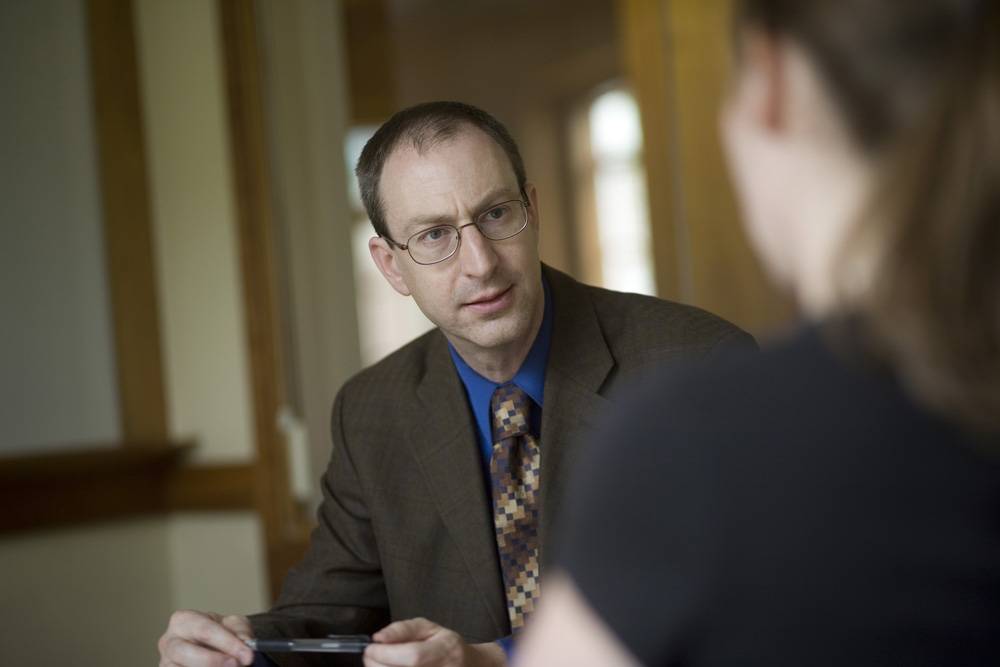How to Reduce Wait Times Without Sacrificing Service
Professor Robert Shumsky's model calculates optimal caseloads.

In a new working paper, operations management professor Robert Shumsky creates a model for finding the optimal caseload to improve case managers’ efficiency and service.
You’ve probably been there before. One minute you’re chatting online with a customer service agent who seems responsive and attentive, and the next minute your questions and answers are held in some cyber purgatory and you wonder why the agent is wasting your precious time. Most likely, however, that agent is chatting with four or five other people simultaneously, troubleshooting their problems in the time it takes other customers to try suggested solutions.
In this scenario, the customer service agent meets the classic definition of a “case manager”—a term we’re more apt to associate with social workers like psychologists and probation officers. But “if you look around,” says Tuck operations management professor Robert Shumsky, “you see this caseworker system all over the place: people juggling multiple customers at the same time.” Even emergency room doctors are case managers; they shuttle back and forth among numerous patients, ordering tests, assessing results, diagnosing conditions, and ultimately discharging or admitting patients. With an online technician the wait is a few minutes; with a social worker, it can be a few days. “But it’s really the same problem,” Shumsky says.
In theory, the case manager system is an efficient way to deploy human resources among a population of customers who need one-on-one attention. In practice, it’s difficult to determine the caseload that balances customer waiting times with quality of service and caseworker idleness—different organizations use different rules of thumb, with varying success.
“The empirical literature shows there tends to be a degradation of service as the caseload gets higher,” Shumsky explains. So Shumsky and co-authors Fernanda Campello and Armann Ingolfsson set out to build a model that would account for the random nature of customer service interactions while computing the optimal caseload given certain conditions. Their model is contained in a new working paper entitled “Queuing Models of Case Managers.”
Their model allows managers to predict three important things about caseload: what’s possible, how well will it perform, and what’s best. In the parlance of queuing theory, “what’s possible” is known as the “stability region,” or how many clients a team of caseworkers can handle before the backlog of cases grows out of control. Performance is defined by client wait times, how busy the agents are, and a comfortable balance between pre-assignment delay (when a client waits to be assigned to an agent) and internal delay (when a client waits to be served by an assigned agent). “What’s best” is characterized by good throughput (minimal idleness) and adequate customer attention. “You want good system performance, but you don’t want to set the caseloads too high because it ruins the service quality,” explains Shumsky.
In the paper, the authors compare their model to the results from caseload heuristics commonly used by organizations. Oftentimes, those informal rules result in caseworkers being overloaded with clients or not busy enough. A detailed, exhaustive computer simulation can help managers arrive at the optimal caseloads, but that process is time consuming, taking as much as an hour or two to find optimal solutions.
The model developed by Shumsky and his co-authors is different: it uses a mathematical formula that can be solved quickly by a computer. Aside from proving itself more accurate than the common heuristics, and just as accurate as a simulation, the model takes less than a second per situation.
Who benefits? Customers, for starters—they’ll wait less for a case manager. But also service organizations who want to be more efficient and offer better service. They can collect data and feed it into the model, or incorporate the model into their customer service software. This is made all the easier because Shumsky has no plans to sell his formula. “This is basic research people can pick up on and use,” he says.